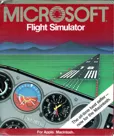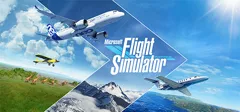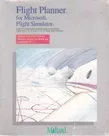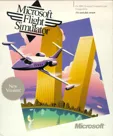Microsoft Flight
Description
Microsoft Flight is the successor to the discontinued Microsoft Flight Simulator series. It is a "free-to-play" title set to appeal to a much wider audience than the previous flight simulator games. Additional content like aircraft or sceneries are available through the Games for Windows Marketplace.
The core game includes the ICON A5, an amphibious light aircraft, the Boeing-Stearman Model 75 biplane and the Big Island of Hawaii scenery. A new mission system was introduced where players can perform stunt-flying and landing challenges, take various jobs at the airport or just enter free-flight mode.
Groups +
Screenshots
Credits (Windows version)
271 People (226 developers, 45 thanks) · View all
| Additions as of May, 2012 |
|
| [ full credits ] | |
Reviews
Critics
Average score: 67% (based on 22 ratings)
Players
Average score: 3.0 out of 5 (based on 5 ratings with 1 reviews)
What Happened To My Flight Simulator???
The Good
It's pretty. And it's free. You can download and install the basic version of Microsoft Flight (MS Flight), either through Microsoft's Games for Windows Live or XBox Live or through Valve's Steam for absolutely no money whatsoever. That gets you two airplanes; the amphibious Icon A5, a light sport craft, and a classic Boeing PT-17 Stearman biplane to fly over Oahu, Hawaii's largest island. No other aircraft or locations are available out of the box. More can be downloaded but that's when price tags start to appear. To this I say "Fair enough".
Graphically, the simulation is attractive. Ground textures are fairly detailed, although there is still some blurring and graininess at low altitudes. At the highest settings, buildings, trees and other objects on the ground are densely populated. Microsoft's flight sims have long had a tendency to suffer from short pauses as additional scenery was dynamically loaded and distant objects tended to "pop" into view. These shortcomings are now noticeably absent. Water textures look lovely, realistically rippling and reflecting clouds and sunlight. Aircraft are modeled in exquisite detail and cast realistic, dynamic shadows on themselves and even into the cockpit. Scenery can be seen reflected on shiny aluminium panels. Overall, I would rate the visual quality several notches over that of Flight Simulator X (FSX), Microsoft's previous flight simulation. I was able to achieve a smooth frame rate with all graphical options at their maximum settings on an Intel Core I7-2600 CPU, an ATI Radeon HD 5800 GPU and 6 GB of RAM. Unfortunately, I can't say precisely what my frame rate was, because there is no longer any facility for displaying it.
Flight physics are quite similar to those of FSX. Stalls are accurately modeled and it seems to me that spins, both controlled and uncontrolled, are easier to achieve than they used to be. Propeller torque is also modeled at the higher realism settings.
The Bad
While the quality of the graphics has improved, the rest of the simulation has been gutted. Gone are computer-controlled A.I. aircraft and interactive airports with working gates and support vehicles. Gone too is the ability to fly over any location around the globe, at least out of the box. The basic sim comes with only one location; Hawaii's Oahu island. You can purchase other locations as add-ons, but many locations are simply not available. Whether or not they will be in time probably depends upon Microsoft's perceived demand for them. At the time of this writing, you could add the other Hawaiian islands and a region in Alaska. That's it. If you want to fly in any other state, let alone any other country, you're out of luck for the time being.
Different weather settings are available, including crystal-clear skies, light or heavy clouds, dense fog and thunderstorms. Weather is static, however, and does not change once set. Dynamic and real-world weather, long a staple of the Flight Simulator franchise, is gone. Snow also appears to be completely absent (well, you're stuck in Hawaii, after all).
Oahu does look admittedly pretty from the air. Roads and airports are attractively rendered, if you can ignore the fact that they are totally uninhabited. There's not a car or truck to be seen anywhere. The only boats in the water appear to be docked. There's nothing to be seen away from shore. The would-be pilot soon gets the eerie feeling that he has been somehow transported to some weird recreation of Oahu island that is totally uninhabited. Simulated flying hasn't felt this lonely since Flight Simulator 3 back in 1988. On-line, multi-player play is supported, but you'd need an awful lot of other virtual pilots out there to begin to rival the air traffic provided by A.I. aircraft in previous sims, especially at supposedly busy airports.
Presumably because there's no-one else in the world to talk to, Microsoft saw no need for radios. There is no ATC (Air Traffic Control) communication of any kind. You can chat with other pilots via text messages or your microphone in multi-player mode, but you can't talk to any control towers.
Aside from a magnetic compass, there are also no navigational instruments. CDI, RMI, ADF, VOR and OMI are all MIA, to say nothing of GPS instrumentation. This sim is clearly not intended for cross-country flying.
While flight physics seem reasonably realistic, aircraft seem easier to control and to fly overall than they were in FSX, even with the flight realism settings maxed out. Crashes can happen, but you really have to hit the ground (or an obstacle) hard. Bumpy landings are almost always forgiven and I even managed to clip a tree-top while flying a little too low with nary a consequence except for an audible "bump"; this with the realism settings maxed out. Airplane damage doesn't appear to happen. You either total your plane, or you don't even scratch it.
Since you acquire MS Flight by downloading it, there is no printed manual. This might be forgiven if the sim came with the kind of extensive on-line help and documentation that we've come to expect from the Flight Simulator franchise. Sadly, this isn't the case. I was completely unable to find any sort of on-line help. The only way in which I was able to glean some idea as to how things might work was by selecting "Options", going to the keyboard control assignment screen and reviewing what keys do what.
The Bottom Line
The goal behind the design of MS Flight appears to have been to make it appeal to a wider audience than Microsoft's previous flight sims; especially the beginner and casual sim flier. Unfortunately, this design betrays a complete lack of understanding on Microsoft's part of their flight simulation customers. They've improved the eye candy while gutting practically everything else good about their flagship simulation.
It reasonably simulates the visuals and physics of flying an airplane, but it hobbles the experience by forcing you to do it in silent, lifeless world and it leaves out activities that are part of the civilian aviation experience such as ATC communications, point-to-point navigation, as well as approach and departure patterns to name but a few. Until now, Microsoft's flight simulators could arguably claim to be a learning and practice tool for actual student pilots between in-cockpit lessons. MS Flight cannot make this claim. Serious amateur pilots will find it too incomplete and bereft of features, while casual fliers will find too little entertainment value to keep them interested, and the lack of advanced features all but nullifies the chance that the casual and the curious might develop an interest in, or an appreciation for, the art and science of flight.
Admittedly, I've tried only the basic, "free" game. Perhaps the experience improves once one purchases a few add-ons. Even if this is so, the trouble with this sales strategy is that you need to engage your audience in order to entice them to spend money on those add-ons, and MS Flight simply isn't engaging enough, in this reviewer's humble option.
It's a good thing that Flight Simulator X was designed to be so open-ended and expandable. At least serious virtual pilots still have a venue for to satisfying their aviation cravings.
Windows · by Halmanator (598) · 2012
Analytics
Upgrade to MobyPro to view research rankings!
Related Sites +
-
Official website
Download the game for free at Microsoft's website (Multilingual)
Identifiers +
Contribute
Are you familiar with this game? Help document and preserve this entry in video game history! If your contribution is approved, you will earn points and be credited as a contributor.
Contributors to this Entry
Game added by Yearman.
Additional contributors: Rola.
Game added May 3, 2012. Last modified April 14, 2024.











